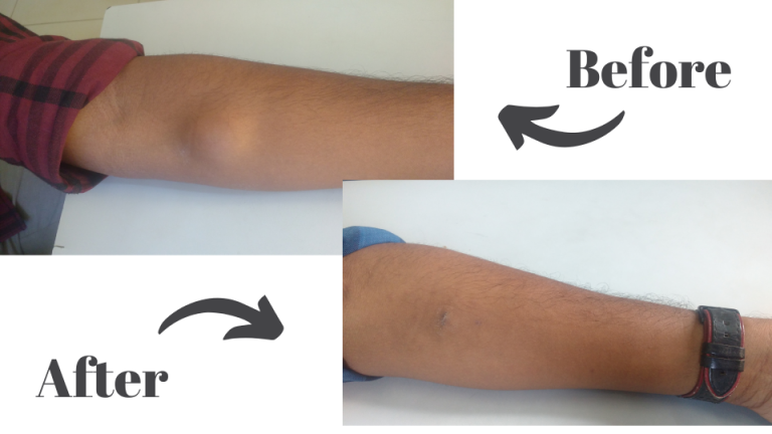|
The hymen is a diaphragm-like structure located at the external opening of the vagina. The aperture(s) in the hymen helps in the drainage of the menstrual blood. The hymen varies in appearance. Some individuals may have multiple apertures instead of a single aperture in the center. It can be either a thin or a relatively thick structure.
The hymen gets disrupted following sexual intercourse. Following disruption, the hymenal remnants at the external vaginal opening are known as hymenal carunculae. The hymen can also get injured following clinical examination, strenuous physical exercise or disease. hence its appearance is not a definitive indicator of the virginity of a woman or a girl. The presence of an intact hymen in a bride is considered very important in some cultures. This probably arises from a correlation between an intact hymen and virginity. It is possible to repair a laceration of the hymen. This procedure is also known as hymenoplasty. Some also know this cosmetic surgery as 'revirginization'. It is a small procedure which does not require an overnight stay in the hospital. We usually perform this procedure under general anesthesia. The remnants of the hymen are carefully brought together in layers using fine absorbable stitches. Follow up is done after a few days as an outpatient. Patients should avoid strenuous activity for a few weeks following the procedure. The labial folds should not be stretched apart for a month following hymenoplasty. We recommend at least six weeks for the tissues to heal. There are no restrictions on any activity after this period. Hymenoplasty is a relatively new technique among other female genital cosmetic procedures. It may help some individuals cope with the stress arising as a result of the cultural taboos of our society. Lipomas are small soft swellings commonly found beneath the skin. Lipomas are usually painless. In most cases, they are accidentally detected while touching the area. In some individuals, they can be large and obvious from a distance. Some of us tend to get multiple lipoma over the body and face. This condition is known as lipomatosis. This may run in certain families. Lipomas are removed either to ascertain the diagnosis or because they are considered unsightly. Lipoma removal is usually an outpatient procedure. Patients can go back home after the surgery.
The traditional technique of removal of a lipoma is with open surgery. An incision placed on the skin is used to dissect the lipoma away from the surrounding tissues. The disadvantage of this technique is the resulting lengthy scar. There is a newer technique which can minimize the length of the scars. This is achieved by means of liposuction. During liposuction, the fat in the lipoma is aspirated with a small tube (cannula) attached to a suction producing device. The tiny cannula is inserted with the help of a small incision. The residual lipoma which remains after liposuction can be removed with the help of a small incision. This technique has significant cosmetic benefits because it leads to a short scar. Thus all scar-related consequences such as hypertrophy, color and texture changes of the overlying skin are minimized. Patients are later reviewed in the clinic. It is usual to have some induration at the operated site. This gradually subsides over the next few weeks. The recovery following this procedure is similar if not faster when compared to the traditional technique for removal of lipomas. Liposuction for the removal of lipoma is a good option for those who want to get it removed with the help of very small incisions. It is especially recommended for individuals with multiple lipoma as the resulting length of the scars are less compared to the traditional open technique. For more information about liposuction, click here. For more information about fat grating, click here. |
AuthorI like to keep it simple. CategoriesArchives
June 2024
Categories |
- Home
-
Cosmetic
- Fat grafting
- Swellings and moles
- Scar revision
- Leukoderma (Melanocyte transfer)
- Hair transplant
- Facial rejuvenation procedures
- Nose job (Rhinoplasty)
- Cleft lip nose correction
- Ear (Otoplasty)
- Lip reduction
- Breast augmentation
- Breast reduction
- Tuberous breasts
- Axillary breasts
- Gynecomastia
- Liposuction
- Brachioplasty (Arm contouring)
- Abdominoplasty (Tummy tuck)
- Female genital rejuvenation
-
Reconstructive
- Contact
- Blog
- Home
-
Cosmetic
- Fat grafting
- Swellings and moles
- Scar revision
- Leukoderma (Melanocyte transfer)
- Hair transplant
- Facial rejuvenation procedures
- Nose job (Rhinoplasty)
- Cleft lip nose correction
- Ear (Otoplasty)
- Lip reduction
- Breast augmentation
- Breast reduction
- Tuberous breasts
- Axillary breasts
- Gynecomastia
- Liposuction
- Brachioplasty (Arm contouring)
- Abdominoplasty (Tummy tuck)
- Female genital rejuvenation
-
Reconstructive
- Contact
- Blog
You can leave us a comment using the contact form below.
We shall get back to you at the earliest.
We shall get back to you at the earliest.
Links
- Face procedures | Rhinoplasty, Otoplasty, Lip reduction, Fat grafting
- Body procedures | Gynecomastia , Breast reduction, Abdominoplasty, Brachioplasty, Liposuction
- Skin procedures | Scar revision, Moles, Leukoderma surgery
Let's be friends !
Follow us at Facebook and Twitter.
Follow us at Facebook and Twitter.
© 2024 Amicus Clinic (Plastic Surgery Centre, Trivandrum). All rights reserved.

 RSS Feed
RSS Feed



